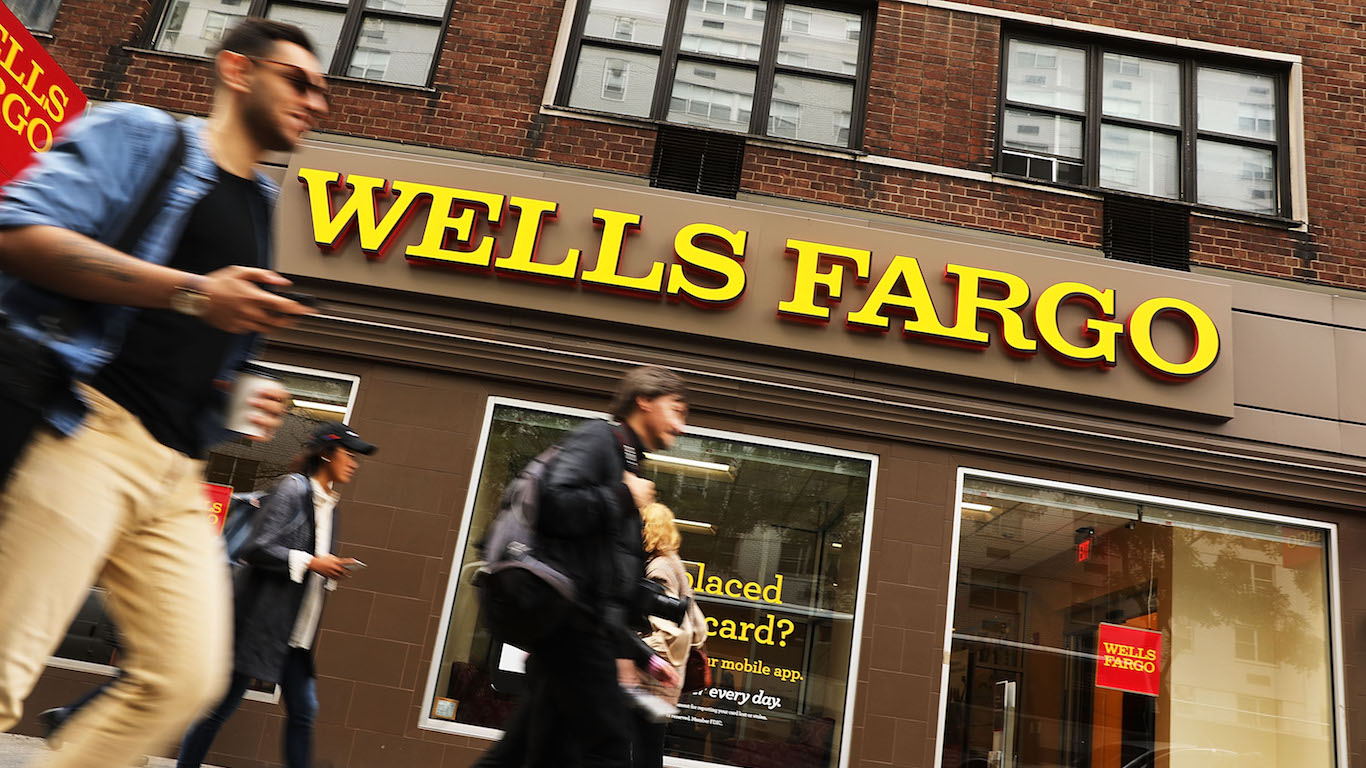
In early trading on Tuesday, the Dow Jones industrials were down 0.14% while the S&P 500 was up 0.31% and the Nasdaq 0.46% higher.
Before markets opened on Tuesday, Bank of America reported better-than-expected earnings per share (EPS) and revenue. Net interest income rose 25% year over year, while deposits declined by just 1%. Shares traded flat early Tuesday.
Goldman Sachs beat analysts’ consensus EPS estimate but missed on revenue. The bank’s global banking and markets segment posted lower revenue that was only partially offset by higher revenue in the asset and wealth management and platform solutions segments. Shares traded down 2.6% shortly after the opening bell.
BNY Mellon beat the consensus EPS estimate by a penny and missed the revenue estimate. Shares traded down 0.5%.
Ericsson missed the consensus EPS estimate but did beat revenue expectations. Sales in developed markets declined but were stronger in developing economies like India. The stock traded down about 6.4%.
Johnson & Johnson beat estimates on both the top and bottom lines. The company also raised fiscal 2023 EPS and revenue guidance. Shares traded down 2.6%.
Lockheed Martin beat both top-line and bottom-line estimates and reaffirmed full-year EPS and revenue guidance. The stock traded up 3.2% Tuesday morning.
After U.S. markets close Tuesday, Netflix, United Airlines and Western Alliance Bancorp are on deck to post quarterly results. Look for reports from Abbott Labs, ASML, Baker Hughes and Morgan Stanley the following morning.
Here are previews of four companies expected to share their results late on Wednesday.
IBM
Shares of International Business Machines Corp. (NYSE: IBM) have added 1% over the past 12 months. The stock has fallen more than 9% so far in 2023, however. Revenue expectations popped when Big Blue reported fourth-quarter earnings in January but EPS estimates declined. How the company navigated the economic headwind and how it views the rest of the year will be critical for investors’ reaction to first-quarter results.
Of 17 brokerages covering IBM, nine have a Hold rating and six rate the stock at Buy or Strong Buy. At a recent price of around $127.80 a share, the implied upside based on a median price target of $145.00 is about 13.5%. At the high price target of $162.00, the implied upside is 26.8%.
IBM’s first-quarter revenue is expected to come in at $14.33 billion, which would be down 14.1% sequentially and by 0.9% year over year. Adjusted EPS are forecast at $1.24, down 65.6% sequentially and by 11.4% year over year. The current full-year estimates call for EPS of $9.45, up 3.5%, on sales of $62.66 billion, up 3.5%.
IBM stock trades at 13.5 times expected 2023 EPS, 12.8 times estimated 2024 earnings of $9.95 and 12.4 times estimated 2025 earnings of $10.30 per share. The stock’s 52-week trading range is $115.55 to $153.21. IBM pays an annual dividend of $6.60 (yield of 5.15%), and total shareholder return for the past 12 months is 6.03%.
Kinder Morgan
Energy infrastructure company Kinder Morgan Inc. (NYSE: KMI) has seen its share price drop by about 8.2% over the past 12 months. It is no big secret that the company’s luxuriant dividend is a major attraction for investors.
About 60% of its revenue is guaranteed by long-term contracts that require customers to pay for space on the pipelines no matter if they have a product to ship. Another quarter of Kinder Morgan’s revenue is fee-based and very stable. Investors are betting that capital spending to boost growth does not eat into those dividends. It has been a good bet since 2018, when the company began raising its dividend payments again.
Inflation and high interest rates contribute significantly to the lukewarm analyst outlook. Of 22 brokerages covering the company, 14 have Hold ratings and just six have a Buy or Strong Buy rating. At a share price of around $17.80, the potential upside to a median price target of $20.00 is 12.4%. At the high price target of $24.00, the implied upside is 34.8%.
Consensus estimates call for first-quarter revenue of $4.75 billion, up 3.8% sequentially and 10.7% higher year over year, and EPS of $0.29, down 6.2% sequentially and by 12.5% year over year. For the full 2023 fiscal year, analysts currently forecast EPS of $1.10, down 5.1%, on sales of $19.71 billion, up 2.7%.
Kinder Morgan stock trades at 16.2 times expected 2023 EPS, 15.2 times estimated 2024 earnings of $1.17 and 14.7 times estimated 2025 earnings of $1.21. The stock’s 52-week range is $15.78 to $20.20. Kinder Morgan pays an annual dividend of $1.11 (yield of 6.24%). Total shareholder return over the past 12 months was negative 2.45%.
Las Vegas Sands
Shares of Las Vegas Sands Corp. (NYSE: LVS) have jumped by about 57.4% over the past 12 months. The stock is up 63% in just the past six months. Since selling all its U.S. properties, the misnamed company operates five resorts in Macau and one in Singapore. Las Vegas Sands is angling for a shot at opening a casino in New York, but it will have to fight it out with the likes of MGM, Caesars and its other rivals for a seat at the table.
Right now, the company has put its upgrade to Singapore’s Mariana Bay Sands property on another hold. The project has been granted a delayed beginning until April of next year, with completion due by April 2028.
Of 19 analysts covering Las Vegas Sands, 16 have a Buy or Strong Buy rating. The other three have Hold ratings. At a share price of around $58.20, the upside potential based on a median price target of $65.00 is 11.4%. At the high price target of $76.00, the upside potential is 30.6%.
Analysts have a consensus first-quarter revenue estimate of $1.83 billion, up 64.1% sequentially and by 97.2% year over year. The consensus also calls for EPS of $0.18 in the quarter, compared to the prior quarter’s loss of $0.19 per share and a year-ago loss of $0.40 per share. For the full fiscal year, Las Vegas Sands is expected to post EPS of $1.47, compared with a loss per share of $1.20 a year ago. Sales are forecast to rise by 112.5% to $8.74 billion.
Las Vegas Sands stock trades at 39.6 times expected 2023 earnings and 21.4 times estimated 2024 earnings of $2.72 per share. The stock’s 52-week range is $28.88 to $60.99, and the company does not pay a dividend. Total shareholder return over the past year is 57.39%.
Tesla
Despite a year-to-date gain of more than 51%, shares of Tesla Inc. (NASDAQ: TSLA) are down about 43% over the past 12 months. Now that most legacy automakers have a number of options available to compete with Tesla, investors have been concerned that Tesla’s margins and profits will suffer as the company has to cut prices (five so far this year) to remain competitive. Tesla bulls see a company with an insurmountable lead for at least the next several years as more plants are built, primarily to produce EVs in the neighborhood of $25,000.
Sentiment toward Tesla remains bullish. Of 36 analysts covering the stock, 19 have a Buy or a Strong Buy rating and 13 more rate it at Hold. At a share price of around $187.00, the implied upside based on a median price target of $219.00 is 17.1%. Based on a high price target of $320.00, the upside potential is nearly 71.1%.
Analysts expect Tesla to post first-quarter revenue of $23.27 billion, down 4.3% sequentially but 24.0% higher year over year, and adjusted EPS of $0.85, down 28.7% sequentially and by 20.6% year over year. For the full 2023 fiscal year, current estimates call for EPS of $3.96, down 2.8%, on sales of $102.49 billion, up 25.8%.
Tesla stock trades at 47.3 times expected 2023 EPS, 33.9 times estimated 2024 earnings of $5.52 and 27.1 times estimated 2025 earnings of $6.91. The stock’s 52-week range is $101.81 to $364.07. Tesla does not pay a dividend. Total shareholder return over the past year is negative 43.03%.
The Average American Has No Idea How Much Money You Can Make Today (Sponsor)
The last few years made people forget how much banks and CD’s can pay. Meanwhile, interest rates have spiked and many can afford to pay you much more, but most are keeping yields low and hoping you won’t notice.
But there is good news. To win qualified customers, some accounts are paying almost 10x the national average! That’s an incredible way to keep your money safe and earn more at the same time. Our top pick for high yield savings accounts includes other benefits as well. You can earn up to 3.80% with a Checking & Savings Account today Sign up and get up to $300 with direct deposit. No account fees. FDIC Insured.
Click here to see how much more you could be earning on your savings today. It takes just a few minutes to open an account to make your money work for you.
Our top pick for high yield savings accounts includes other benefits as well. You can earn up to 4.00% with a Checking & Savings Account from Sofi. Sign up and get up to $300 with direct deposit. No account fees. FDIC Insured.
Thank you for reading! Have some feedback for us?
Contact the 24/7 Wall St. editorial team.

 24/7 Wall St.
24/7 Wall St. 24/7 Wall St.
24/7 Wall St.



